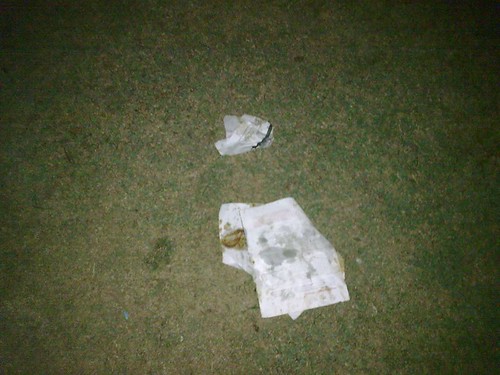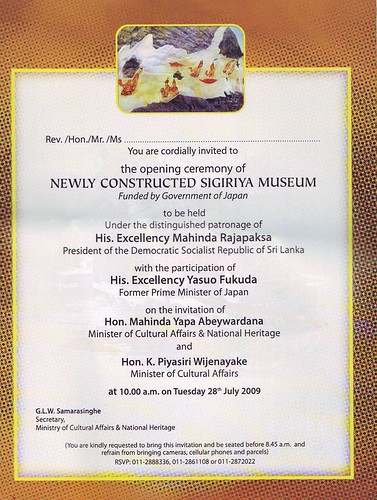




The museum was a long felt need to attract the up-end tourist market, local as well as foreign, stressed CCF DG Prof. Seneviratne. “These tourists look beyond simplistic information or just visiting a site and moving on.”
Source Dinamina, 16-07-1969
Dinamina, 16-07-1969
 Just in case they delete the pages I have added images to my photo stream
Just in case they delete the pages I have added images to my photo stream(Sina.com)
First, the apartment building was constructed
Then the plan called for an underground garage to be dug out.
The excavated soil was piled up on the other side of the building.
Heavy rains resulted in water seeping into the ground.
The building began to shift and the concrete pilings were snapped
due to the uneven lateral pressures.
The building began to tilt.
And thus came the eighth wonder of the world.
June results of the RIBA future trends survey suggests downturn is bottoming out
Optimism is slowly returning to the architectural profession, according to the most upbeat RIBA future trends survey since the start of the year.
Data for June shows that conditions are still tough, but improving slightly.
Practices predicting more work rose from 27% in May to 31% in June, while the number of staff that are currently underemployed fell from 27% in May to 23% in June.
The housing sector is looking particularly robust compared with previous months. The number of practices expecting their workloads to increase rose from 11% in May to 24% in June. Confidence within the commercial and public sectors remained fairly stable however.
Meanwhile eight per cent of practices expect staff levels to increase over the next three months, compared to just three per cent in May. The number of practices expecting staff cuts fell from 23% in May to 16% in June. Three quarters of all practices expect staff levels to remain constant over the next three months.
Adrian Dobson, director of practice at the RIBA said the results indicated the recession was bottoming out for the sector: “The June results mark the end of the first six months of the RIBA Future Trends Survey, and overall we have witnessed a slow but steady return to some confidence and optimism within the profession over the last quarter.”

photo © Nicolas Borel. Atelier de Portzamparc 2009
The Hergé Museum by Atelier Christian de Portzamparc
Looks pretty and weird and all that's in between but my question is whether if it capture the true "Tin Tin" spirit? to me it only reflects a few adventures. May be the real thing must be better. What do you think?
Hergé Museum
26, rue du Labrador
1348 Louvain-la-Neuve
Belgium
Georges Prosper Remi (22 May 1907 - 3 March 1983), better known by the pen name Hergé, was a Belgian comics writer and artist.His best known and most substantial work is The Adventures of Tintin, which he wrote and illustrated from 1929 until his death in 1983, which left the twenty-fourth Tintin adventure Tintin and Alph-Art unfinished. His work remains a strong influence on comics, particularly in Europe. He was inducted into the Comic Book Hall of Fame in 2003.


Over the years, Hergé’s artistic output has become established as a work of distinction. The idea of a museum has been germinating from as far back as 1979, while he was still alive. The goal was always to make Hergé’s myriad creations known to the wider public. To do justice to such an important project, a lot of time and careful reflection was necessary. The main task was to strike the right balance between the nuances of a complex reality and the legendary status that was starting to develop around the man and his creation.
In 1986, three years after the artist passed away, the idea took shape in the form of the Hergé Foundation. From the start of the new millennium, this organisation (now renamed Studios Hergé) has worked tirelessly to identify and catalogue the most suitable elements for exhibition in a museum consecrated to Hergé. On 10 January 2001, Tintin’s ‘birthday’, the important announcement was made: the Hergé Museum was to be built in Louvain-la-Neuve, a recently created university town, less than 30 kilometres from Brussels.


Eight years later and the dream is materialising. The Hergé Museum opens its doors at the start of June 2009, two years after the first stone was laid on 22 May 2007, the artist’s birthday. Expectations are as high as the project is ambitious. A well-known architect was chosen to bring the industrious plans to fruition: the Frenchman Christian de Portzamparc. In recognition of his achievements, in 1994 he was awarded the Pritzker Prize, the most prestigious accolade in international architecture.

Christian de Portzamparc has used all his skills in building design to integrate the principals of Hergé’s work, superbly highlighting the unique features of the latter’s art, which led to his becoming the founder and master of the clear line technique.
| | |
| Louvain-la-Neuve is built on a straight-edged concrete slab with a car park underneath. It immediately seemed like a good idea to disengage the museum from the town, better to move it away a little towards the woods. In this way, bathed in the light streaming through the large bays, the visitor is confronted with “four landscape objects”, which correspond to the general layout and Joost Swarte’s scenography. Each of these objects has its own personality; each is a kind of character. Each has a specific sculptural form, colour and unique design. Each displays an aspect, disproportionately enlarged, derived from Hergé’s drawing style. One traces Tintin in America, another King Ottokar’s Sceptre… To these four “objects”, we can add a fifth: the lift shaft, vertical and coloured in white and blue, which I had first imagined as red and white, but which Fanny found too literal. What is clear to me, now that the museum exists, is that there were infinite sources of inspiration for the project. There was the programme of exhibitions, of course, and the constant discussions with Fanny and Nick Rodwell, as well as the work of Hergé in all its dimensions of course: its identity, its individuality, its unique character. I said to myself, from this point on, that the museum was obviously a tribute to Hergé, but also as much a game played with Hergé, or a letter to Hergé.” | |




Beginning of building work : July 2007
Opening day : 2nd June 2009
Program: Cultural facilities accommodating a museum dedicated to Hergé, as well as permanent and temporary exhibitions areas, a video projection room, a cafeteria, shops, studios, storehouses and administrative premises.
Floor space : 3 600 m2
Client:
Proprietor: « La Croix de l’Aigle » S.A. : Fanny et Nick Rodwell, Studios Hergé..
Project manager : Robert Vangénéberg.
Project Management : Walter De Toffol – INCA ( Ingénieurs Conseils Associés)
Architect : Christian de Portzamparc
Atelier Christian de Portzamparc TEAM: Céline Barda, Bruno Durbecq, Odile Pornin, Yannick Bouchet, Konrad Kuznicki
Landscape designer: Jacques Wirtz
Scriptwriters : Joost Swarte, Thierry Groensteen and Philippe Goddin
Scenographers : Joost Swarte and Winston Spriet
Director : Laurent de Froberville








The development, known as “Lotus Riverside,” has a total of 629 units, 489 of which have already been sold. Now buyers are clamoring to get their money back, and authorities are making efforts to reassure them. The assets of the project’s developer, Shanghai Meidu Property Development Co., have been frozen and the city officials said the developer’s ability to repay homebuyers was secure, according to a statement on the municipal government’s Web site (in Chinese). A hotline has been set up for Lotus Riverside buyers, and by Sunday afternoon, more than half of them had met with a group of lawyers and officials organized to help them negotiate with the developer, according to the statement.
Meanwhile, the cause of the accident is under investigation and nine unidentified people from the developer, contractor and management company have been detained.
A representative of Shanghai Meidu could not be reached for comment.
The disaster could reveal some uncomfortable facts about lax construction practices in China, where buildings are put up in a hurry by largely unskilled migrant workers, and developers may be tempted to take shortcuts.
According to Shanghai Daily, initial investigations attribute the accident to the excavations for the construction of a garage under the collapsed building. Large quantities of earth were removed and dumped in a landfill next to a nearby creek; the weight of the earth caused the river bank to collapse, which, in turn, allowed water to seep into the ground, creating a muddy foundation for the building that toppled.
The South China Morning Post noted that the pilings used in the Lotus Riverside development, made of prestressed, precast concrete piles, are outlawed in Hong Kong because they aren’t strong enough to support the kind of ultra-high buildings that are common in Hong Kong. But in mainland China, they are often used because buildings there are typically much shorter.
Quality problems have long plagued construction in China, though they seem to be more apparent in rural areas and smaller cities, not in major metropolises such as Shanghai and Beijing. When school buildings were flattened by last year’s massive Sichuan earthquake, a number of parents faulted shoddy construction for creating “tofu buildings” that fell while other nearby structures were able to withstand the impact of the quake. More recently, state media reported that several new dams along the Yellow River are in danger of collapse, a situation attributed to shoddy construction practices, embezzlement and unqualified workers.
Source[a]rchitectonics © 2008. Blog design by Fernando Coello (Randomness)